Ted’s First Small-Ship Cruise
By Ted Scull.
Heading into my senior year in college, I had one empty slot to round out my final academic schedule. Sitting with a good friend one day, we both decided to study Russian, the language. We were bound for Europe in the months after graduation, and the professor, though known to be a tough taskmaster, also had a great reputation.
At the end of the first day of class when we had been introduced to the Russian alphabet and how the letters were pronounced, Dr. B. gave us our assignment. Be prepared for a quiz, and if you passed to his satisfaction, you could continue, otherwise you will have to find another course to complete your credits.
We attacked the task with relish and stayed up half the night testing each other, and the next day we returned to class and passed muster. A few fell by the wayside.
The language study included quite a lot of Russian history and politics, and I became so intrigued by the world’s other superpower, I decided to plan a trip there. After graduation from college, I had six weeks between a summer job and starting an academic year abroad in Paris. My friend Bob planned a motorcycle trip deep into Eastern Europe, and we would rendezvous in Paris in October.
Heading off to Europe
After graduation, on August 12, 1963, I sailed from New York on the German liner Hanseatic and connected to the boat train for Paris where I stashed my belongings, those not needed for traveling east. At Gare de L’Est I boarded an overnight train for Prague, the start of a month and a half of travel. The next day, while I was beginning lunch in the restaurant car, we made a stop at Pilsen. Cartons of Pilsner beer came aboard, my favorite foreign beer at home.
Arriving at Prague Central Station late in the day, I had failed to look up where my hotel was located. So, I showed the taxi driver the name, Esplanade, and we took a strange meandering route arriving at my destination about 15 minutes later. When I entered my hotel room, I looked out the window and what did I see – the railway station just two blocks away.
I stayed two full days, seeing the city on foot, and while a beautiful and intriguing place, it had nowhere near the bustle and excitement of Paris. The train to Vienna took just four hours and there I teamed up with another college friend and his new wife for a Danube River cruise all the way to the Black Sea and onward by overnight ship to Yalta.
SUBSCRIBE: For small-ship cruise updates & special offers!
Ted’s First Small-Ship Cruise: Vienna & Boarding the Riverboat
All travel from now was through Intourist, the Russian government travel agency. One either picked the tourist or first-class level and the hotel charge included three meals a day. It was only permitted to stay in cities on the Intourist list, and the major ones had a limit of five days. Yalta, an inexpensive resort town, permitted up to four weeks. For travel between most cities, you could choose to fly or take the train.
Two nights in Vienna revealed a stunning city of art, music and architecture, and its lively atmosphere would be hard to match in the Czechoslovakian, Yugoslavian, Romanian and Bulgarian cities in route to the Black Sea.
The Soviet-owned riverboat Amur (named after a river is eastern Siberia) we boarded had been built on the Danube as one of a pair, qualifying as war reparations for the damage done to Russia in WWII. Its purpose was to bring foreign currency to an economically struggling Russia. The riverboat was white with a red stripe along the main deck and hammer and sickle on the funnel.
Passengers occupied three decks, one full deck of windowed outside twin-bedded cabins with private facilities, and a second higher deck with more cabins, an observation lounge, large windowed dining saloon, and a bar. A wraparound promenade allowed complete circumnavigations. Open space included a large portion of the top (navigating) deck and a small area at the bow one level below.
Ted’s First Small-Ship Cruise: Settling In
My first riverboat, fairly new and seemingly well-maintained, was a pleasant surprise, but then I had no idea really know what to expect. Upon casting off, we had some 60 passengers, about half capacity but then it was near the season’s end.
Dinner, however, got off to a shaky start. We were amongst the last to board, and there was no place for us to sit together at the long, shared table. As we knew no one and heard no English spoken among the others, we stood there looking helpless. Eventually one of the stewardesses came to our rescue, and I launched into my first attempt with Russian. She smiled patiently and moved around some chairs and set up a table for three off to one side. After that we would be assigned seats together at the main table. We did meet a few of the European passengers, but overall, not much English was spoken.
The food was decent and forgettable: soup, some sort of meat (occasionally fish), potatoes, and a vegetable for lunch and dinner. Breakfast offered a dollop of large lump red caviar, bread and a boiled egg. Drink choices were soda, beer and wine.
Our ports were Bratislava, Budapest, Belgrade, Iron Gate (passage), Giurgiu, and Ismail.
The real excitement began the next morning when we were underway. I had never sailed along a major river before, not even in a small boat, and this river was just amazing, taking us from Central Europe through the Balkans to the Black Sea, from democracies to Communist dictatorships. The era was the height of the so-called Cold War — for some, us against them, but it was more complicated than that. One could not simply say that Hungary, Yugoslavia, Bulgaria and Romania could be lumped together willy-nilly or that all four felt the same toward Moscow, capital of Russia and the Soviet Union.
RELATED: Mother Russia River Cruising. by Ted Scull
Back to the Danube. We were going with the flow and moving rather fast. From time to time we came up behind slower traffic such as powered barges and others that needed a tug to push or pull the load. They needed to be overtaken, and at the same time make sure there was enough room to pass, and taking into account the bends in the river, plus if anything was coming upstream.
Barges and tows moved very slowly, and for the most part we were faster, bigger and more maneuverable. Cargoes consisted of coal, iron ore, rock, gravel, petroleum products, lumber and grain.
Following a few meets and overtakings, I began to realize that people actually made their homes on the barges. Clothes lines had laundry drying, some carried bicycles, and others an open deck for relaxing, attractively surrounded by plants.
Our vessel had an illustrated booklet of national flags so we could understand where the traffic came from or was going to. The Rhine-Main Canal was not open yet so southern Germany was as far inland as one could go.
During the day we passed the upbound sistership Donau with an exchange of whistles. Curiously, there were no cheers or waves between the sisterships, just people lining the railings. And we never saw another riverboat.
Bratislava
Our first port was Bratislava, a major city in Czechoslovakia, and before that a longtime German city with the name Pressburg. The Ottoman Empire attacked many cities along the Danube using it as the conquering route inland, but Pressburg never fell.
Because we were the only native English-speaking passengers on the boat, we were pretty much on our own, so we made our own way from the landing to the attractive city center and main square, churches that dated to the 14th and 15th century. Making a loop, we passed through small squares and along narrow lanes that led to wide boulevards. A fortified citadel towered over the city, but then there was not the buzz there is today.
Budapest (Two Cities)
Budapest was altogether different. Originally two cities, Buda and Pest were separated by the Danube, with the former overlooking the more important side with an imposing gothic-style Parliament modeled after the British counterpart fronting on the river.
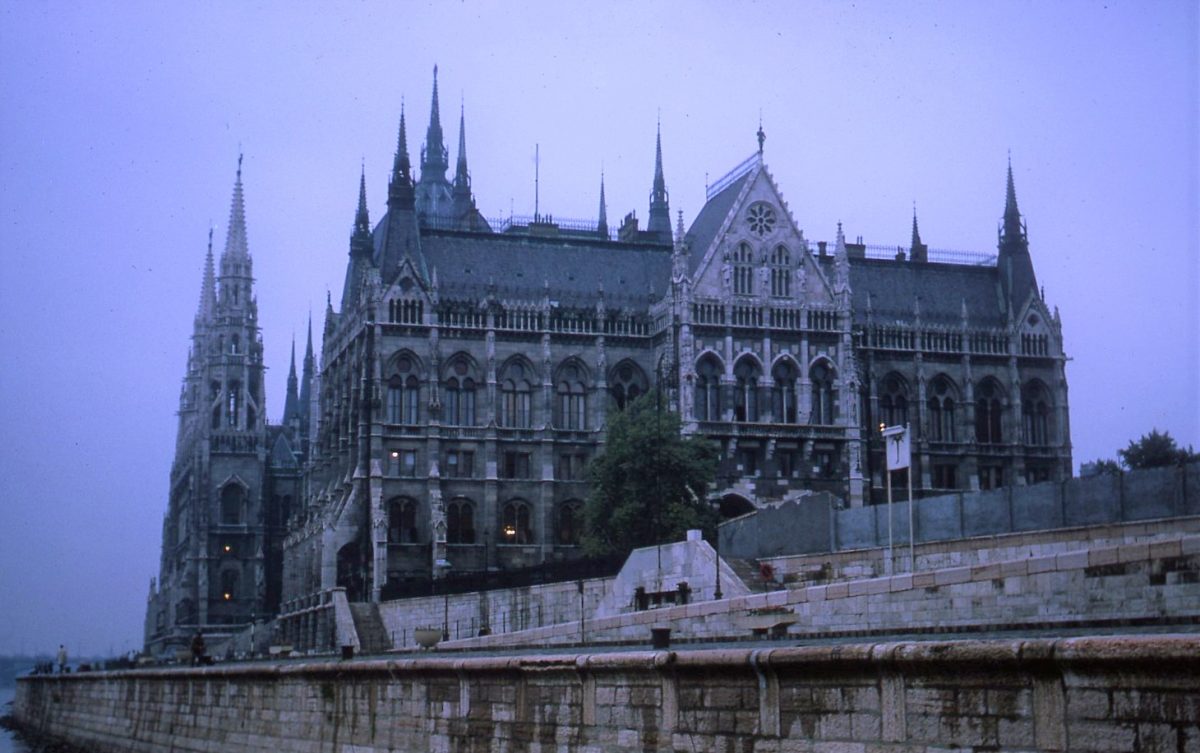
Gothic-style Parliament building, modeled after the British Parliament fronting on the Danube at Budapest. * Photo: Ted Scull taken aboard riverboat AMUR
Impressed by this architecturally rich city, we set out from the Pest side where riverboats dock today. Once a wealthy city, Budapest built the first subway in Continental Europe, had the first public telephone system and first telephone exchange, and stimulated by an order from the Parliament builders, the first mass production of light bulbs.
We zigzagged amongst the monumental buildings, many in Art Nouveau style, crossing to Buda on one suspension bridge to then climb up to the medieval battlements to a viewpoint overlooking the Danube. Winding back down, we took in the famous Gellert Hotel and its spa to then to cross back over a handsome suspension bridge decorated with tongue-less lion statues. The architect was said to have committed suicide when he saw the empty mouths at the opening ceremony.
Belgrade
For the stop at Belgrade, Yugoslavia’s capital, Marshal Tito, the dictator, did his best to keep the Soviet Union at bay. We tied up in a small cove off the main channel and had a bit of a climb to reach the city center. The city has foundations of many previous incarnations.
Belgrade experienced 115 major battles, and since Roman rule, has been completely destroyed 44 times, had 40 different names and served as a capital of five different states. It was a bit much to even try to take but a superficial overview in the time allotted.
Drama at the Iron Gate
Continuing on down the Danube, we next came to the Iron Gate, a dramatic series of gorges created by the Transylvanian Alps crossing the river. The Danube changes its character to a rapidly flowing torrent with waters roughed up by its narrowing and dropping fast enough to create dangerous rapids. Our pace quickened, and I could sense tension in my body. To the left we passed a pair of steam locomotives standing by to haul the upriver traffic. Now, for safety reasons, that traffic had stopped to permit the downriver traffic to pass.
Today, the rapids have now been tamed by dams and locks providing safe navigation and hydroelectricity. The passage is scenic and safer but no longer genuinely dramatic.
Welcome to Romania (Not)
Cruising overnight, the Amur eased up to a landing marked Giurgiu, a river port with road access to Bucharest, the Romanian capital. Across the river was the port of Ruse in Bulgaria. Our crew had the lines ready to hand over to the Romanian receivers but they just stood there looking at us. With our boat now alongside the floating landing stage, the captain ordered the crew to jump ashore and tie up the boat.
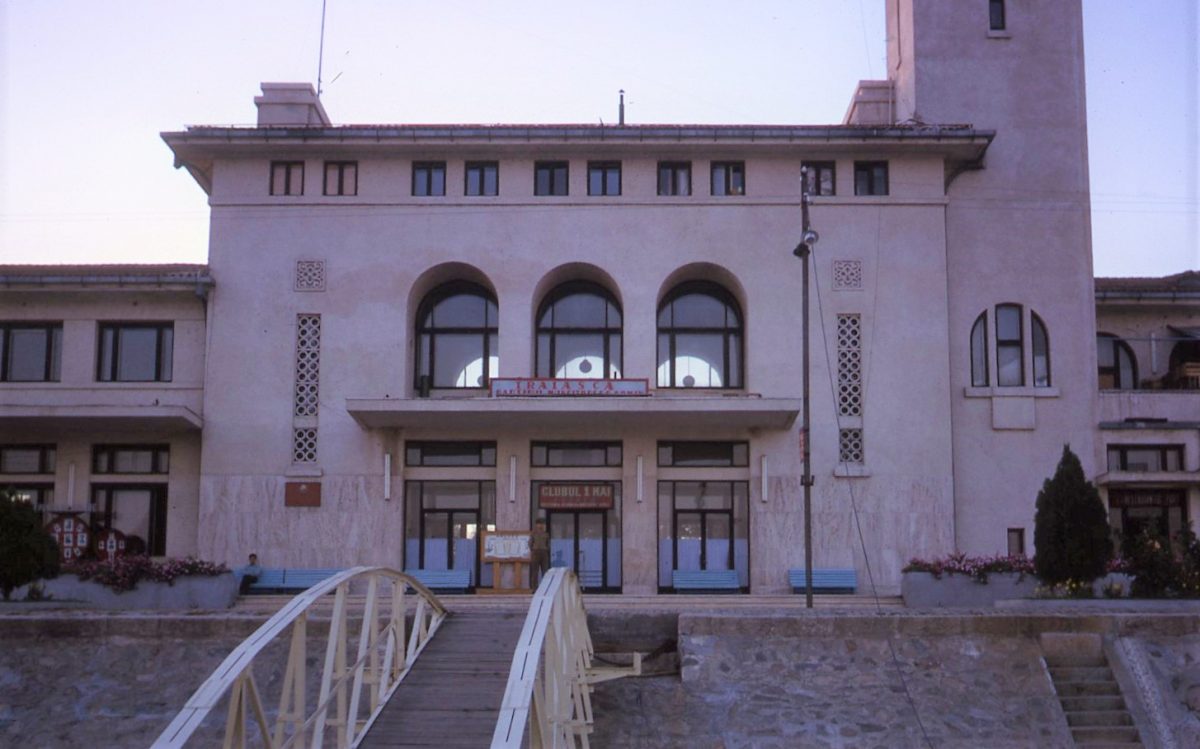
Landing station at Giurgiu, Romania before troops arrived to prevent going ashore. * Photo: Ted Scull
The men hesitated, and then without any warning, a contingent of Romanian soldiers marched around both sides of the terminal and stood at attention. A Romanian officer yelled something across to our captain, now standing outside the pilothouse, first in Romanian (a Romance and not a Slavic language). There was silence, and the Romanian officer gave an order, and his troops lowered their weapons then took several thumping steps forward.
That was it, we were not welcome. Our captain rang the telegraph, and we moved off the landing and made a wide arc to dock at Ruse, across the river in Bulgaria.
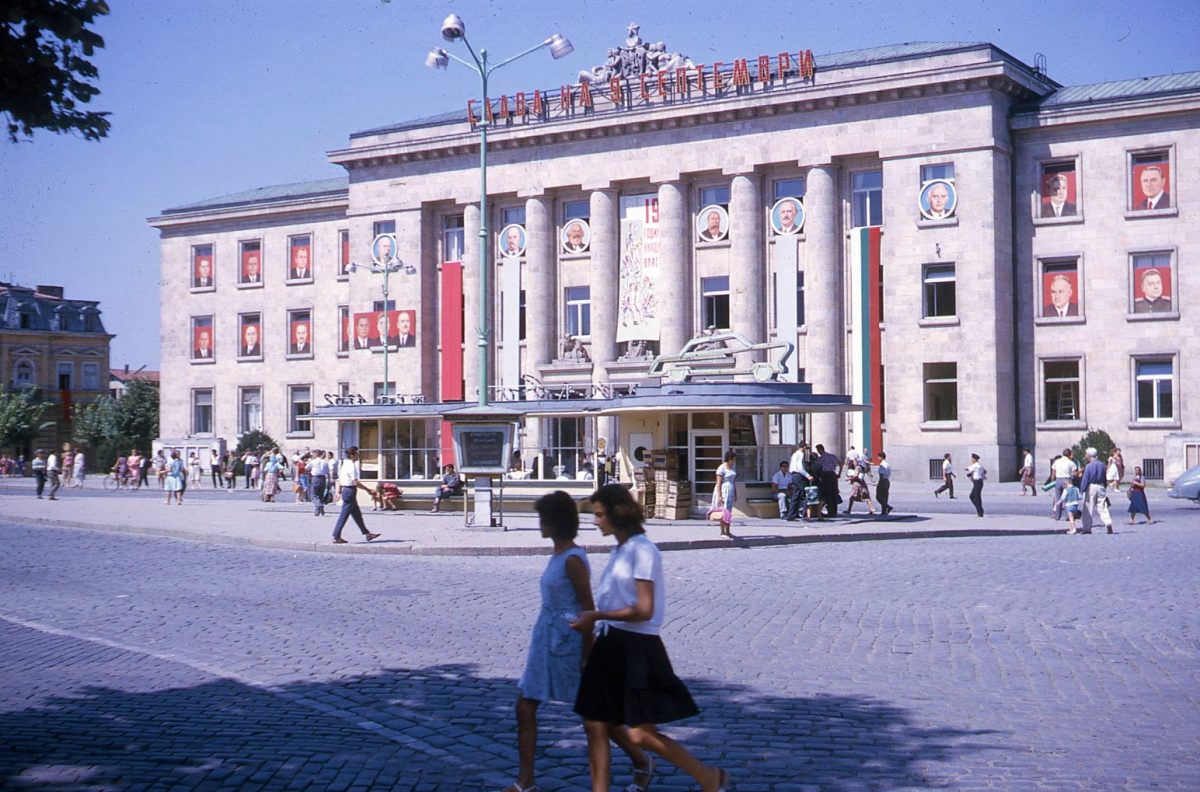
Ruse, Bulgaria’s most prominent government, a billboard to post portraits of heroic leaders. The red letters are a salute to the 9th of September. * Photo: Ted Scull
Not Wanted
The Romanian demonstration provided an official snub against Russia, something that increasingly became a pattern prior to the breakup of the Soviet Union many years later. As the Bulgarian stop was scheduled for the upriver transit, nothing was planned, so we simply spent a few hours ashore wandering through a sleepy, medium-size Bulgarian river city.
With a full moon rising above the river, we proceeded in the growing darkness, and during the night, the Danube would turn north and then east through Romanian territory. In the morning we eased over to a landing at Ismail, a Romanian port about 50 miles in from the Black Sea.
RELATED: Cruising the Danube River on the New AMA Magna. by Gene Sloan.
RELATED: Beer & Biking on the Danube River with Scenic. by John Roberts.
Changing from a Boat to a Ship (Small)
The Amur pulled up astern of the small Soviet passenger vessel Kolchida. Those who were leaving here, including our trio, disembarked and walked forward a few hundred feet to the Black Sea ship and boarded for our one-night voyage.
We sailed about an hour later through the marshy, flat Danube Delta. There were lots of birds about and still enough evening light when the ship sailed out into the Black Sea for the overnight sail to Yalta.
Chess, and the Winner Is …
Some Russians my age approached me asking, in Russian, if I played chess, and when I indicated yes, they set up a table at the stern. About a dozen others, college students returning home, surrounded the two players. Everything happened so fast, with my Russian opponent moving his pieces very quickly. I did not play that way. I concentrated as hard as I could and tried not to take too long, and after about 20 minutes, I had him in checkmate. I was not sure how it all happened. Did he let me win? Anyway, I was rewarded with a beer with the ship now rolling to the Black Sea swells.
Dinner was just passable as I assume all the ingredients had come from Russia, while the riverboat took on stores in Vienna its turnaround port. It would be an introduction to the Russian menus that would little vary from day to day and eventually became a non-topic. You just ate what was put in front of you. Then I took to my bunk, and in the morning, when I awoke, we were approaching a steep coastal landscape with Yalta sprawled at its base.
Yalta and Beyond
My friends stayed several days, and I remained in a seafront hotel for two weeks, as it was cheap and I could practice my Russian on anyone who would talk to me. My tourist level included a guide and car every five days, so I managed to see the site of the Yalta Conference and the Valley of Balaclava, the location for the charge of the Light Brigade, a battle between the British and Russians.
Leaving Yalta, I then another five weeks, traveling independently by train, and in between, a 21-day tour starting out in Moscow and then to Stalingrad (now Volgograd), followed by a two-day paddle steamer voyage to Rostov, then Sochi, Kiev, and Leningrad (now St. Petersburg).
Again, on my own, by train to Riga, Latvia’s capital, Moscow, Warsaw and Paris where, in the latter, I resided for eight months. But that story is for another day.
RELATED: Danube River Cruise with Aboard the New AMA Magna. by Gene Sloan.
RELATED: Beer & Biking on the Danube with Scenic. by John Roberts.
Looking Back
My basic Russian came in handy when traveling on trains, trams, buses, seeking directions, ordering meals and having a minimal chat. Visiting the Soviet Union was time well spent, if not unsettling at times.
During the group tour, one member, a young English fellow who spoke fluent Russian, vanished about 10 days into the itinerary, and there was no explanation forthcoming from our guide.
On the riverboat between Stalingrad and Rostov, some of us apparently fraternized a bit too much with the Russian passengers. We were relegated to one lounge and sat at separate tables at one end of the dining saloon.
When in Moscow, I meet some students in Red Square, and they invited me to their homes. Later, when I returned to the city by train, I was discreetly handed a message as I walked along the platform warning me that my friends would be arrested if I met up with them again.
Soon after settling in Paris, my friend from college, who shared the Russian language class, came to visit for several days. We exchanged stories and there were plenty. He then sold his motorcycle and headed home. We still connect all these years later.
My six weeks in the Soviet Union and eight months in Paris were life changing. I had grown up quite a bit by the time I stepped onto the pier in New York. It was July 7, 1964.
Ted’s First Small-Ship Cruise Was Just the Beginning …
Beginning with the Danube just after graduating from college, I became smitten by rivers and river cruising. When I had the time and money, I began to collect them with subsequent travels: Rhine, Rhone, Moselle, Elbe, Soane, Volga, Don, Nile, Yangtze, Mekong, Amazon, and closer to home, St. Lawrence, Ohio, Mississippi, Columbia, Snake and less than an hour’s walk, the Hudson.
Every one is different and has stories galore to tell, and I find them all intriguing in their unique ways.
The growth of river cruising has been a phenomenon, adding a fabulous new way to see our world, and so much of it developed along rivers. They provided routes of discovery, development, conquest, retreat and travel before decent roads and steam railways.
Leisure cruising started first on the Nile in the late 19th century on a river that was the most important geographical factor in the development of early civilization.
Modern river cruising has developed so fast, especially in Europe, and the resulting competition has driven innovation and cruise ship-style luxuries. Travelers can still choose between the plain and fancy.
I happen to prefer the riverboats that don’t try to be the be all and end all of the latest luxury cruise package. I like to concentrate on the river, its scenic delights and commerce and to go ashore in ports to see what this river is responsible for.
My favorite riverboats have been the 1926-built Delta Queen, built for transportation, then a long life of cruising with a genuine link to the past, the outstanding replica stern-wheeler, American Queen, and Pandaw ‘s fleet of small-size boats with their fetching colonial atmosphere.
I would also be more than happy to sail again in the likes of the Amur, the riverboat that began my story. It gave me the initial entry into a new means of travel and the results are evident. I don’t know what happened to her, but her sister Donau has continued on for decades, most recently housing cyclists who sleep on board and cycle from a different port during the day.
Don’t miss a post about small-ship cruising, subscribe to QuirkyCruise.com for monthly updates & special offers!
© This article is protected by copyright, no part may be reproduced by any process without written permission from the author. All Rights Reserved. QuirkyCruise.com.

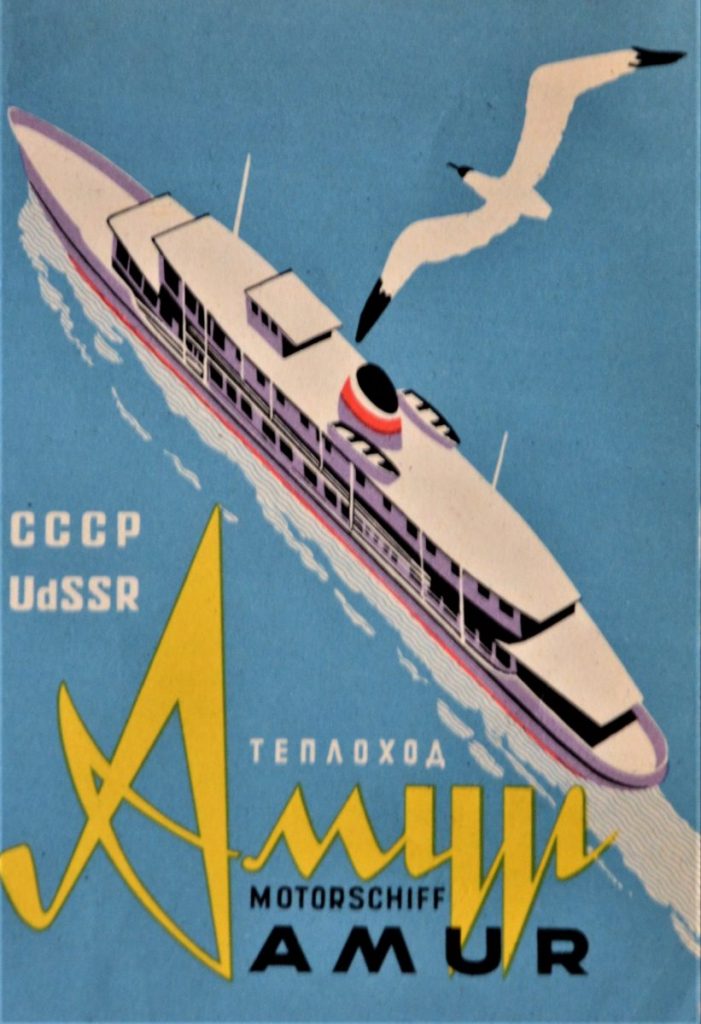
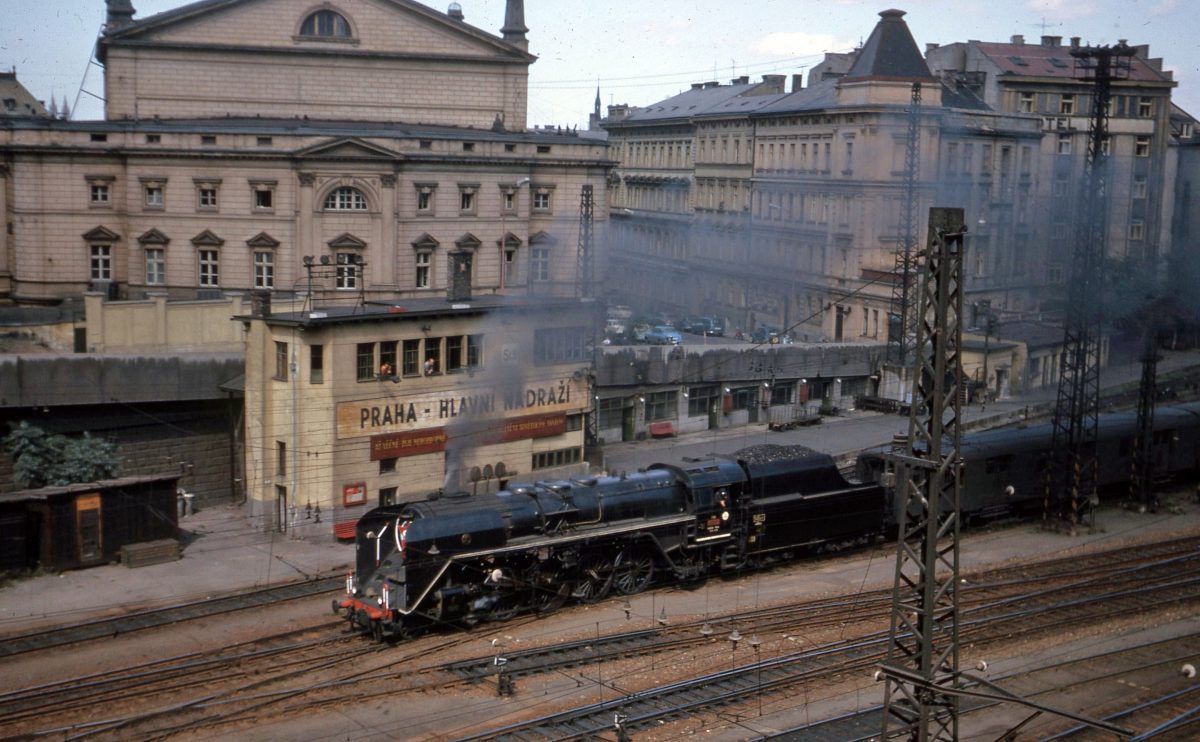
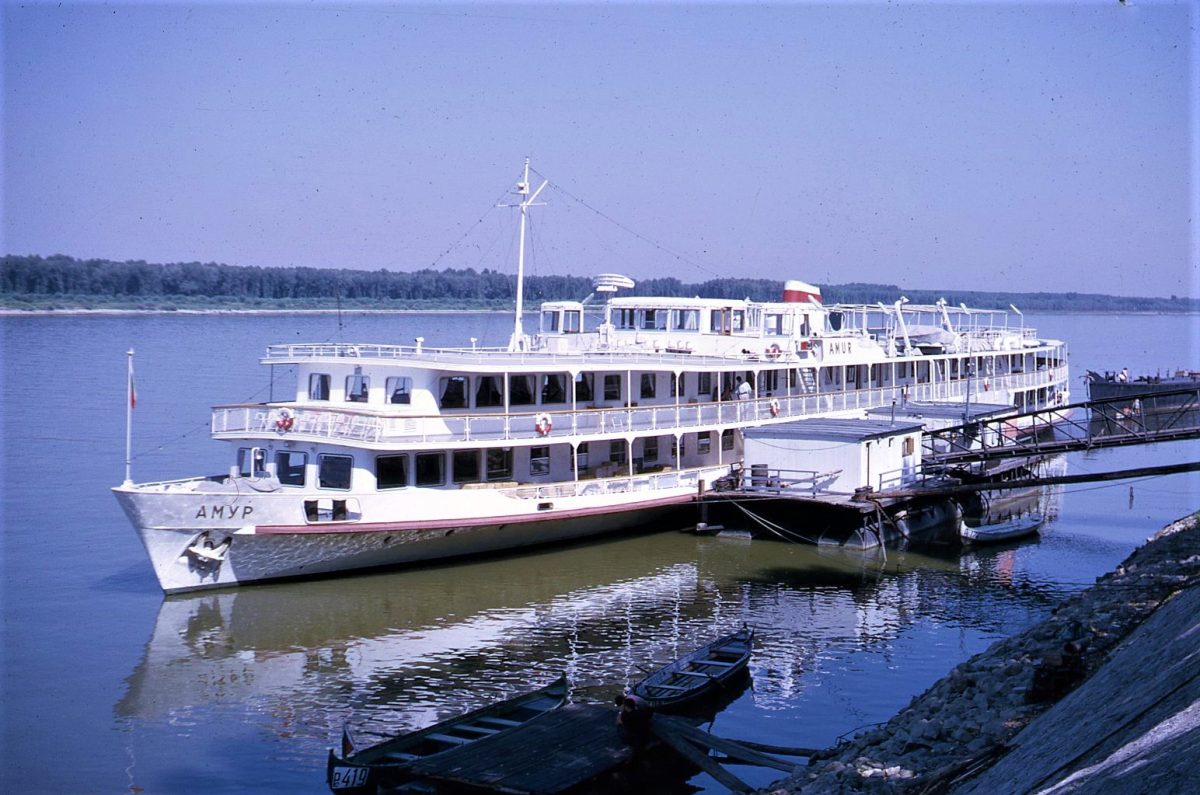
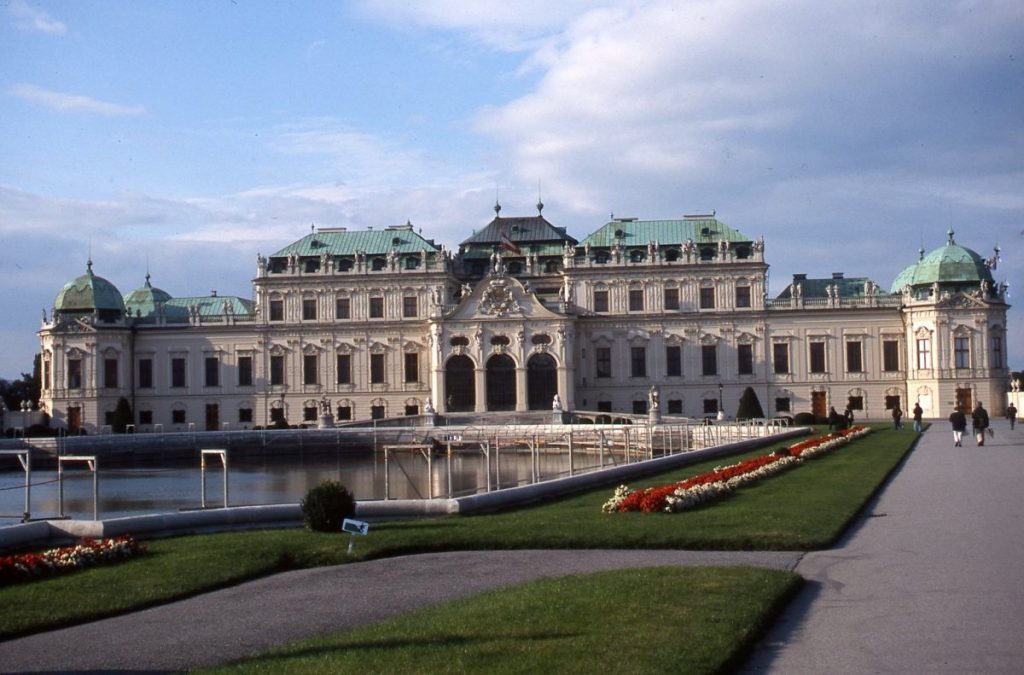
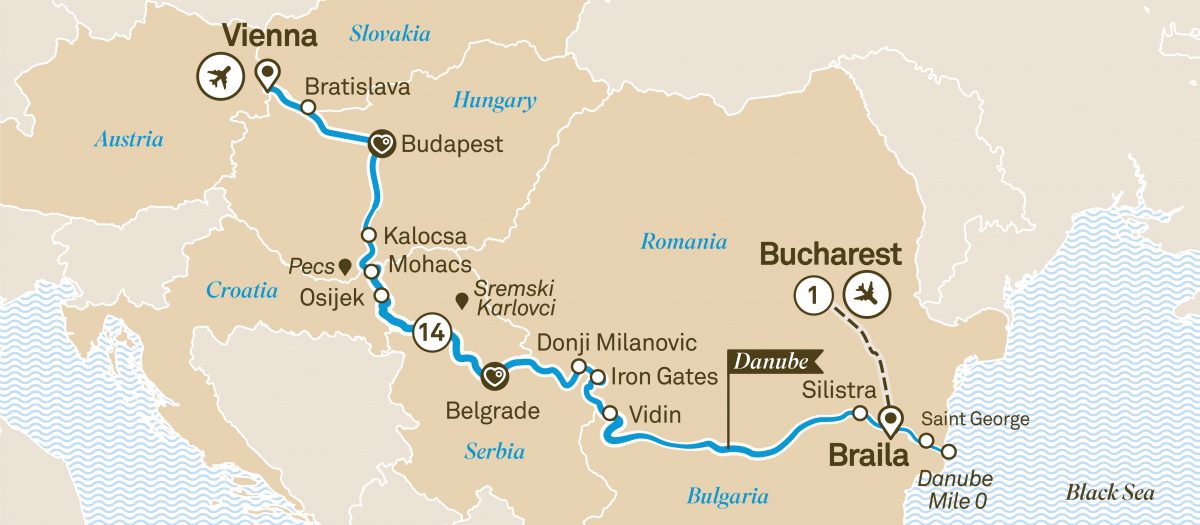
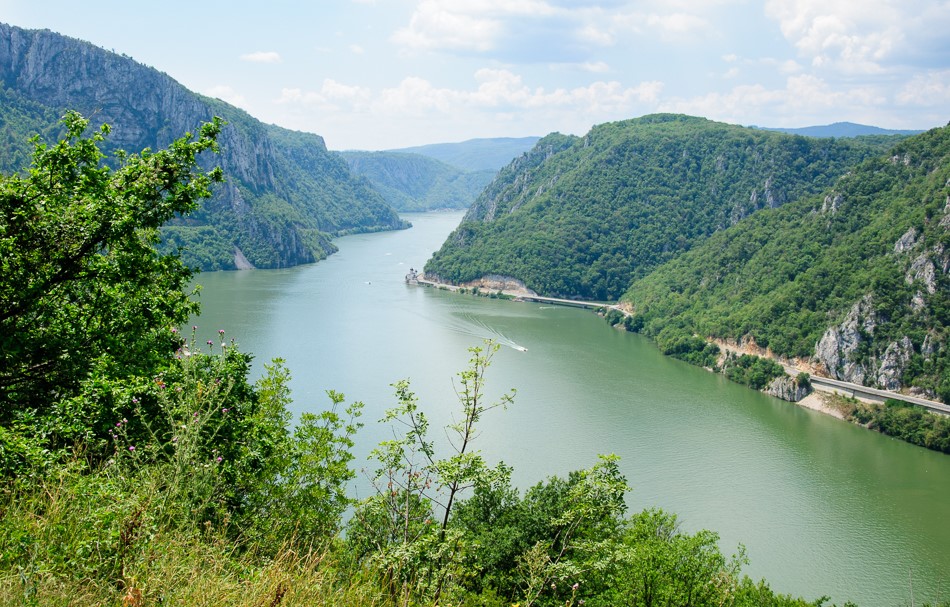

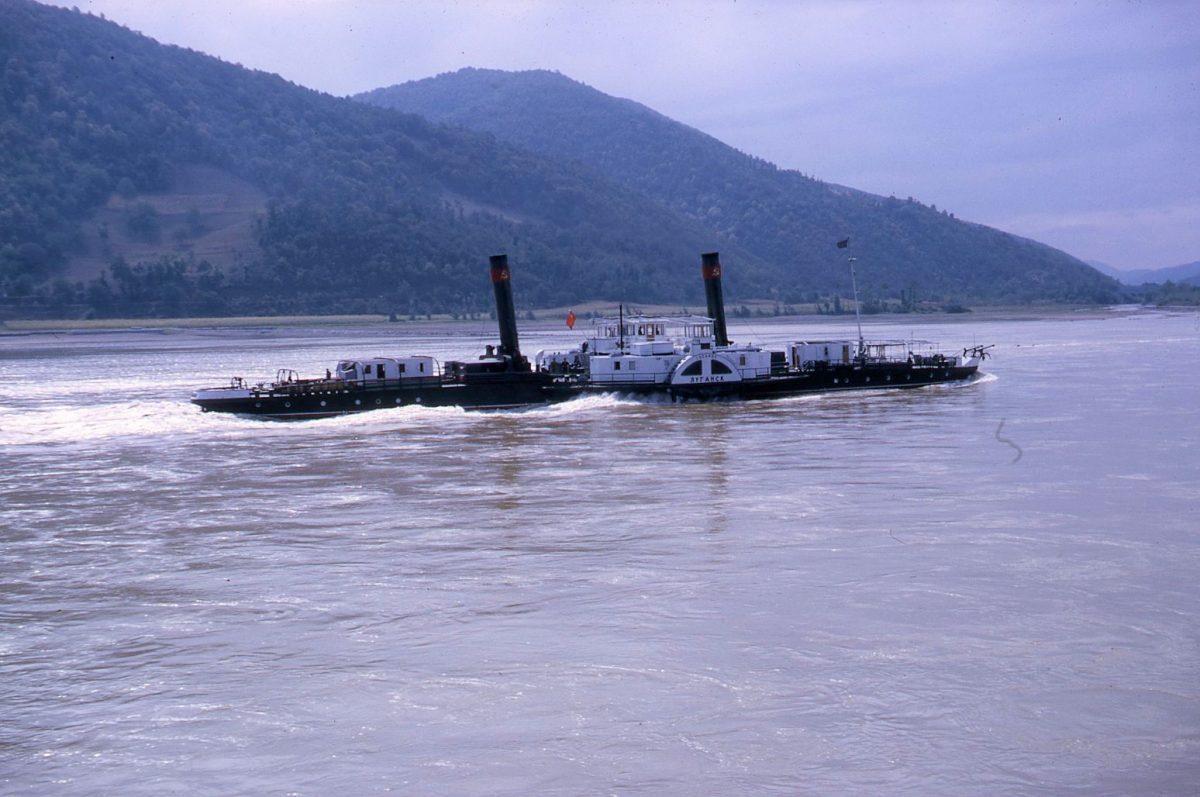


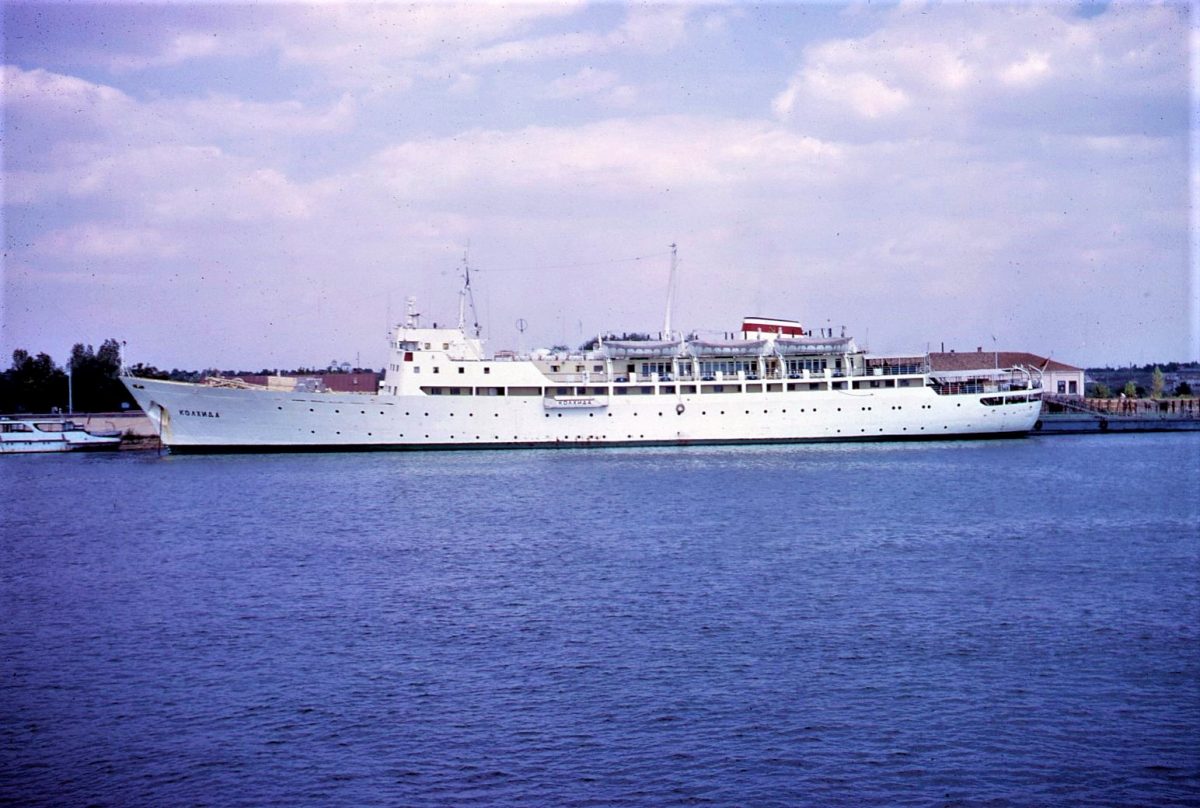
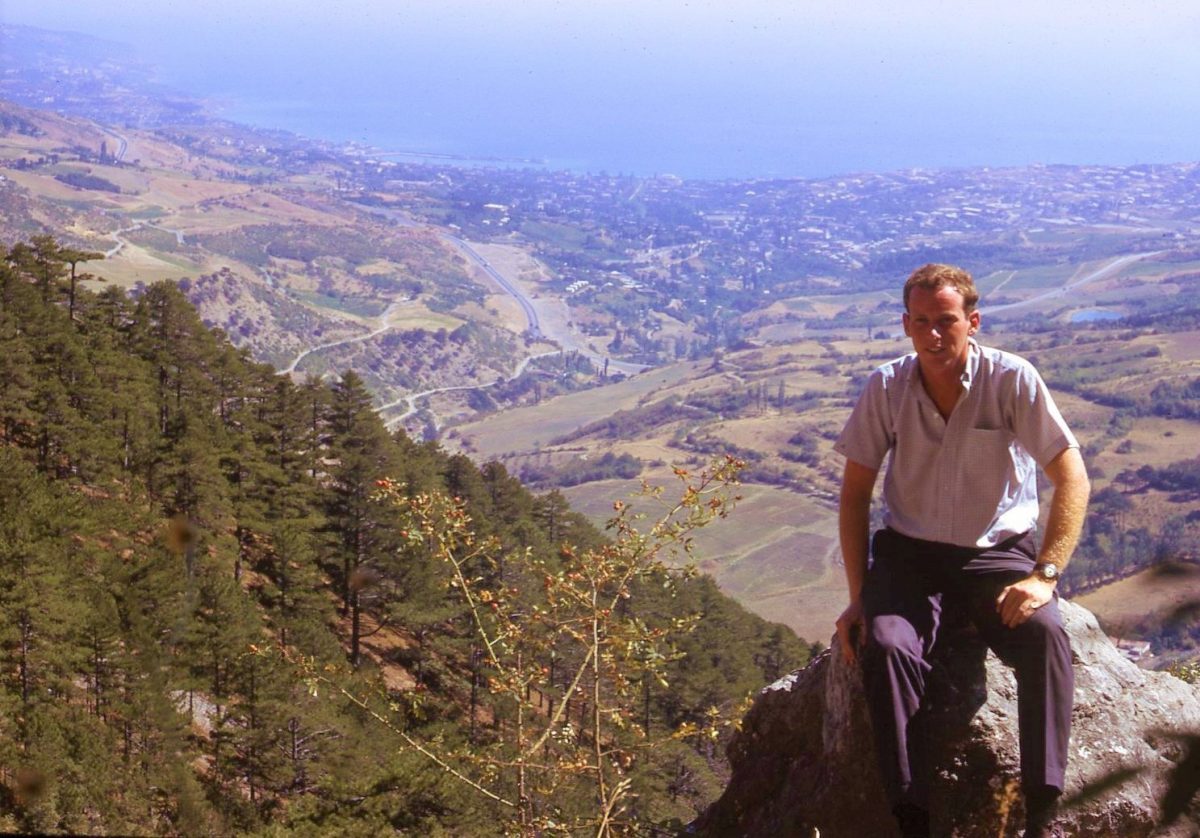

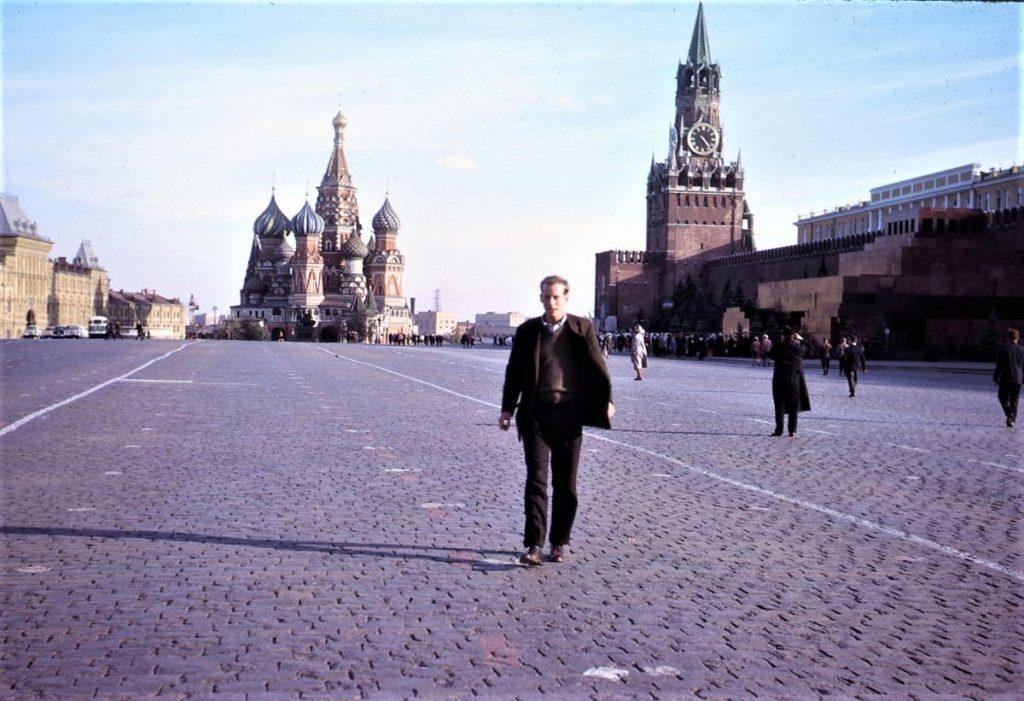
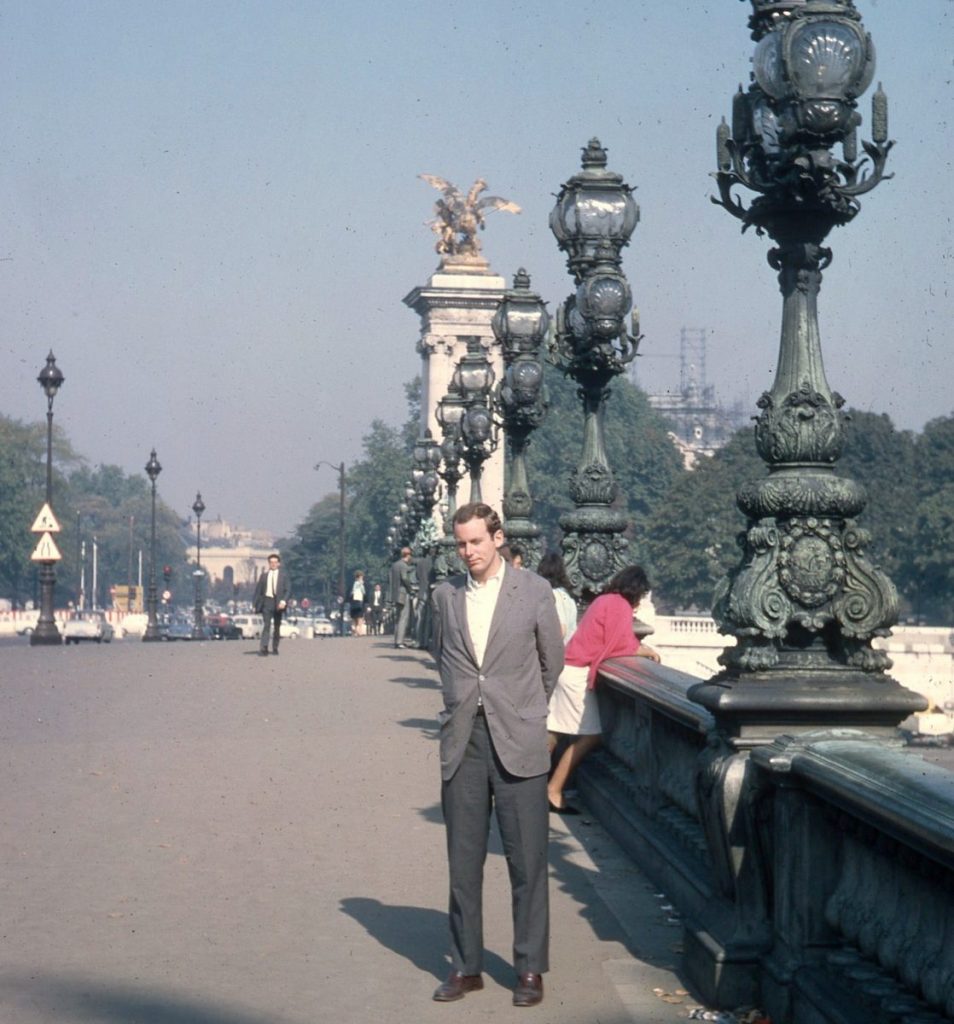
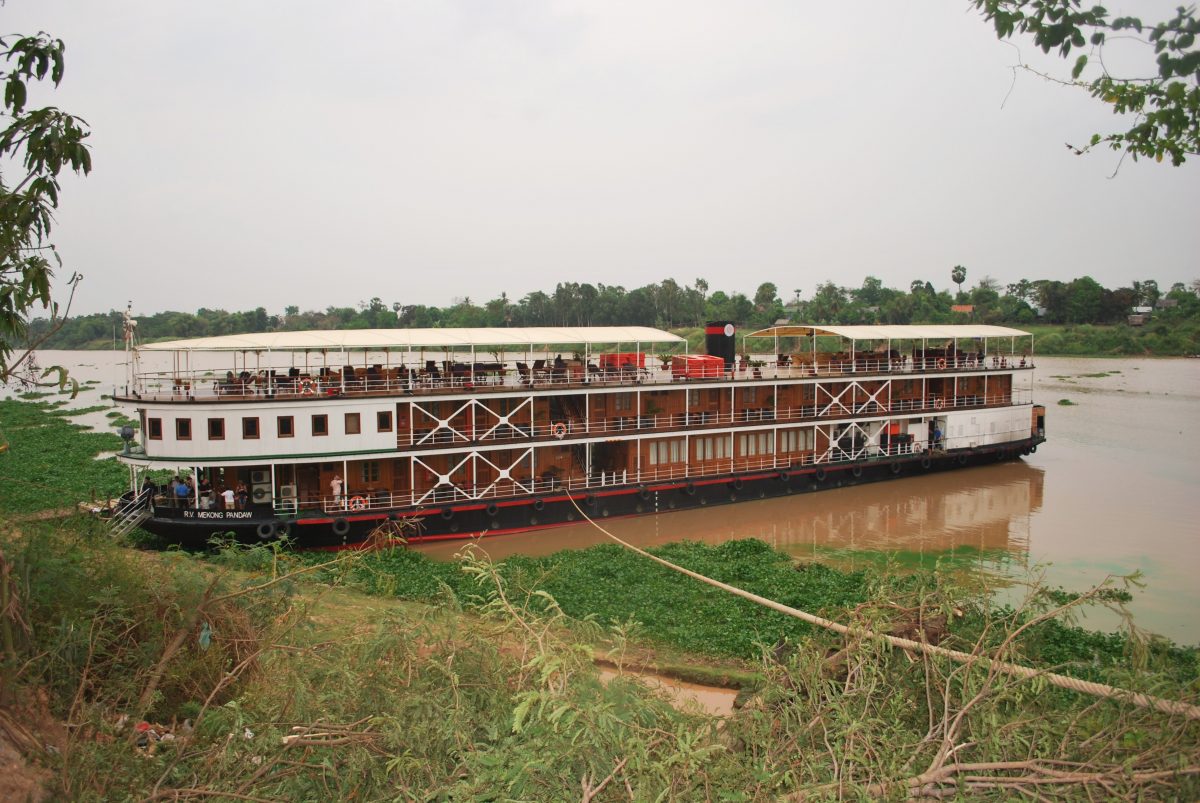
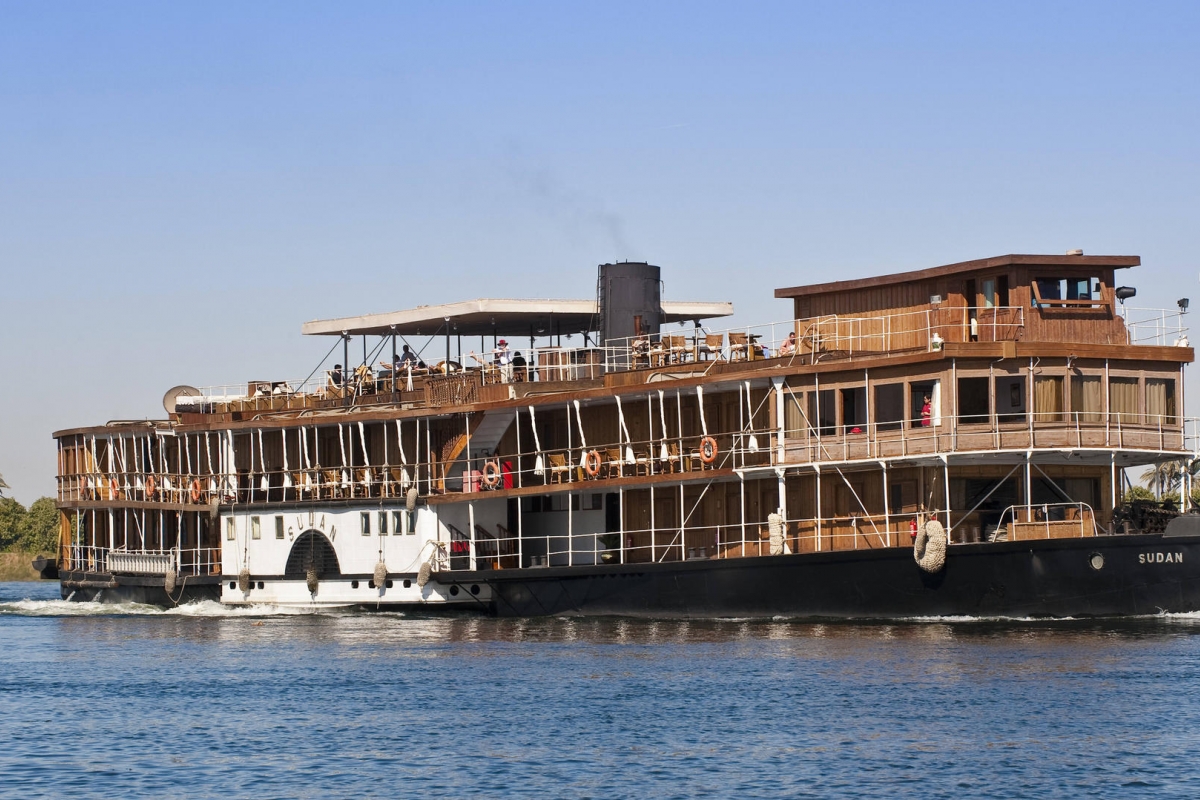
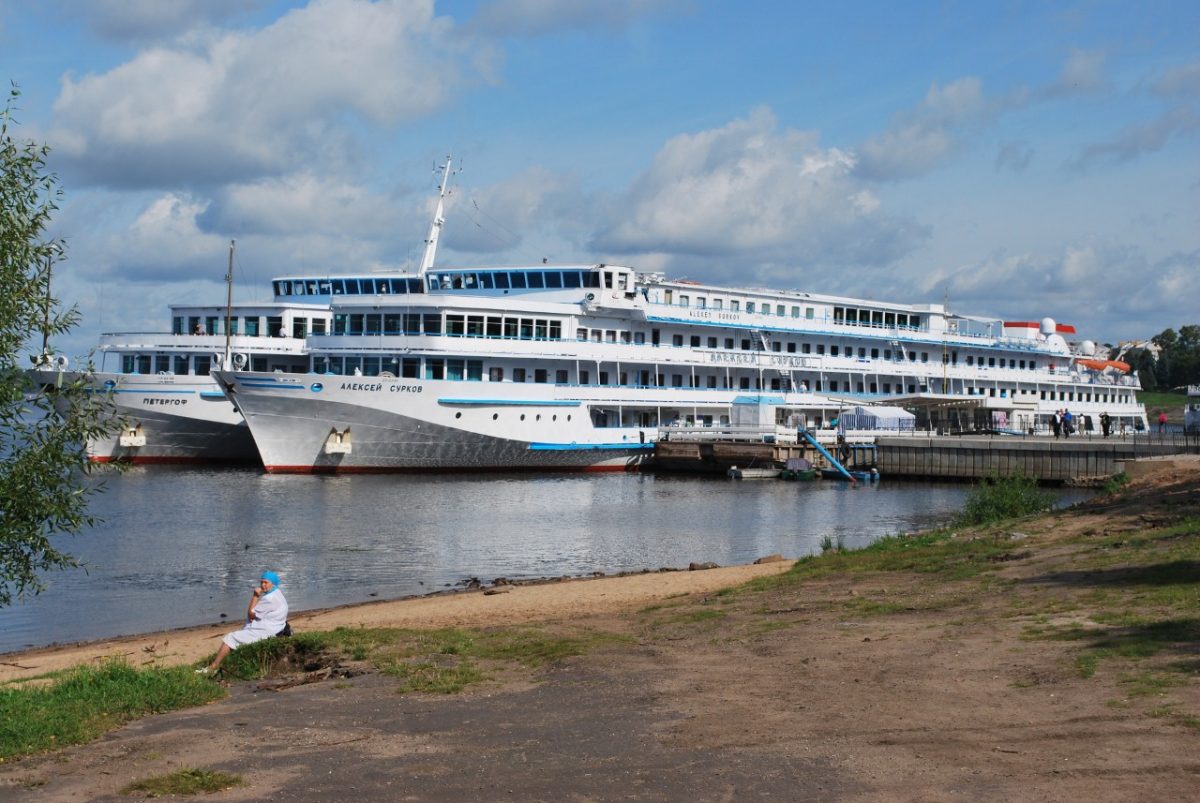
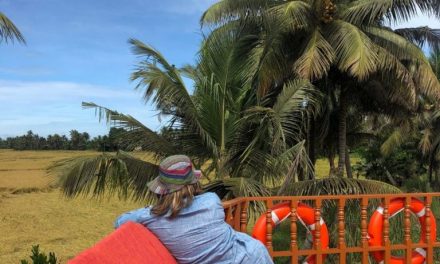
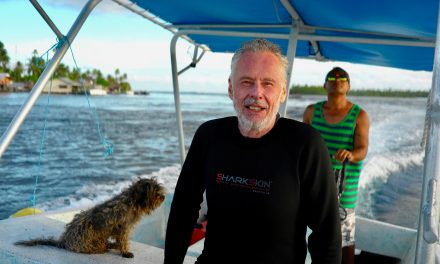
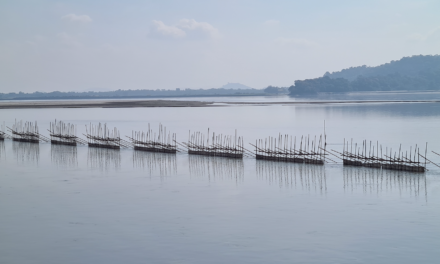
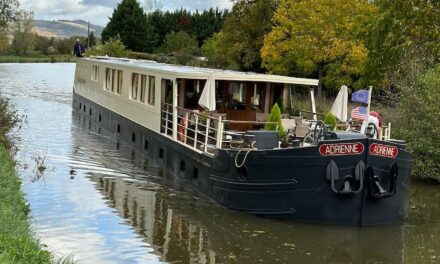
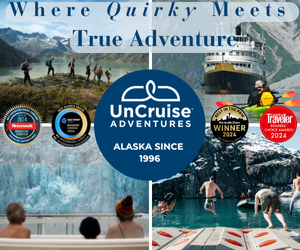
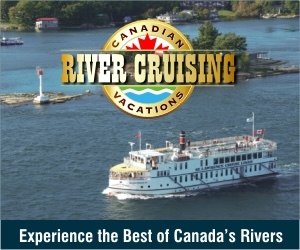

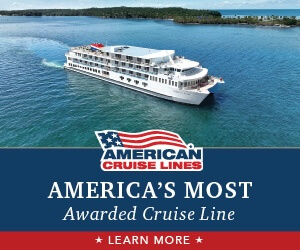




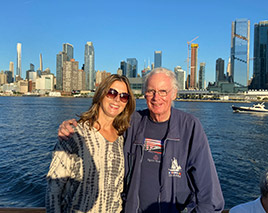 HEIDI SARNA
HEIDI SARNA
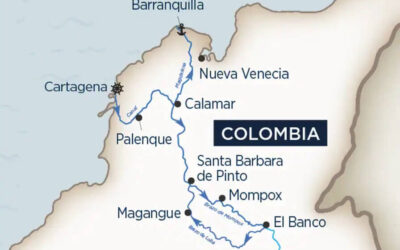
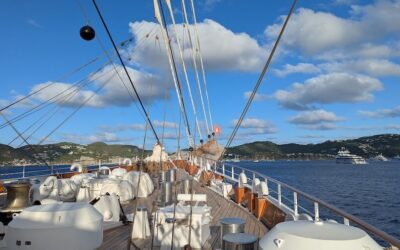
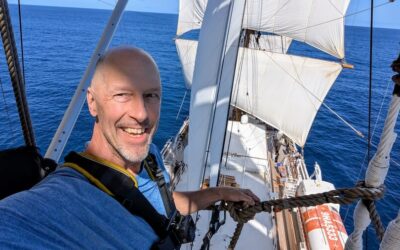
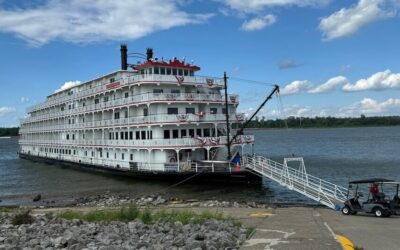
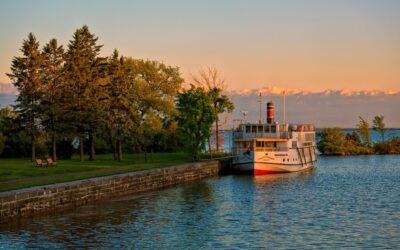

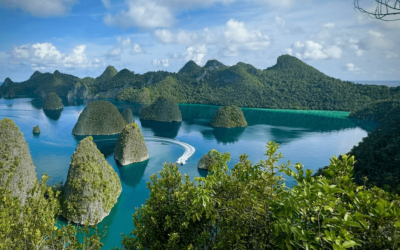
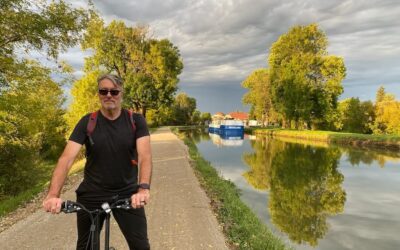
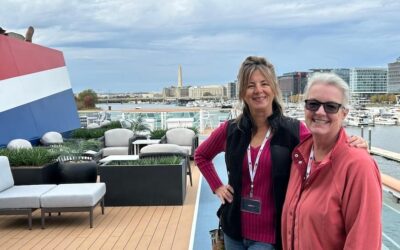
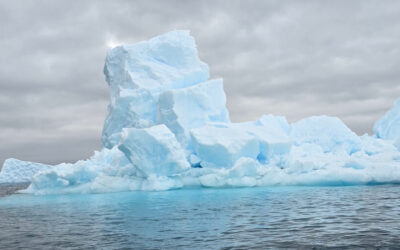
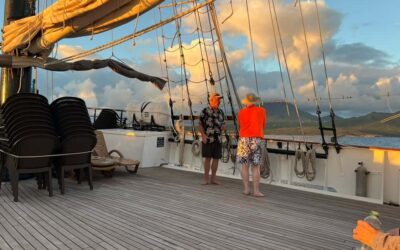

What a wonderful story, Ted! So interesting, every bit. Thank you!
Thank you Anne. I really appreciate your comments. Early tourist travel to the then Soviet Union was indeed an adventure as well as a rich cultural experience. Ted
Ted. Pressburg belonged to the Austrian Hungarian Empire and Izmail is a former Russian and now Ukrainian city. Just for clarification.
I appreciate your article. Wonderful story.